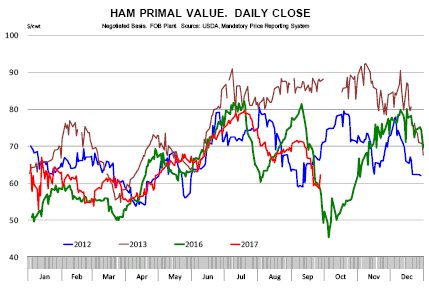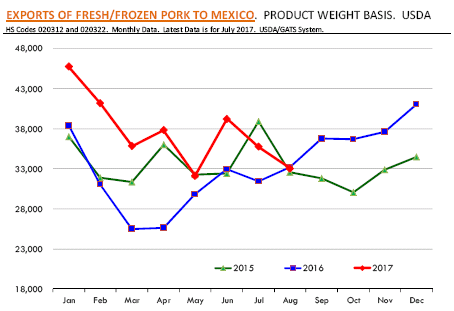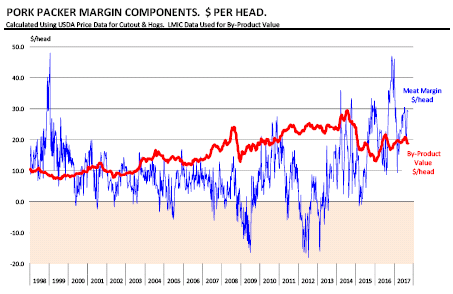



CME: Weekly Pork Export Sales Not as Strong as Expected
US - Hog futures have rallied in the last two trading sessions despite continued erosion in the cash hog index and weak pork cutout values, reports Steiner Consulting Group, DLR Division, Inc.One of the more striking developments in the last few weeks has been the dramatic shift in the spread between December and October hogs. The spread was steady for much of the spring and summer at around $5-$6/cwt but it has collapsed recently and it is trading at – $4.25/cwt (October trading as much as $4.25/cwt under the December price).
The market, at least up to this point, appears to believe that the problems in the hog market are short term. Yes, there are a lot of hogs coming to market, with slaughter last week exceeding 2.5 million head and likely near those levels again this week. And the increase in hog availability has run against an expected slow start of the two new processing plants.
However, the expectation reflected in current Dec/Feb futures is that current low prices will generate a fair amount of interest among domestic and export buyers. We saw a similar dynamic play out last year as well and the difference this year is that there will be two new large pork packing plants looking for hogs, a much better alternative than trying to find Saturday shifts or continuing to expand hours.
It is a fair expectation that with +2.5 million hogs expected to come to market on a weekly basis loin prices will come under some pressure. They are generally soft in Q4 and all the extra supply could cause some additional value erosion. The loin primal last night closed at $75.75/cwt, down $5/cwt (-7 per cent) compared to a year ago.
Last year the loin primal lost about 17 per cent between the end of September and early November. Given the sharp decline so far this fall we probably will not see a similar decline but the point is that loins will do little to contribute to the carcass in the short term. Pork belly prices are suffering a bit of a hangover from the all time record levels established last summer.
While many would agree that bellies at 90 cents are a value, it is a bit uncertain when retailers will once again decide to run bacon promotions. Judging from current futures trading it appears market participants think there is more upside to belly prices later this year (support the cutout) and even more so in Q1 of next year.
In the short term, one of the key drivers for the pork cutout and the hog market as a whole will be ham values. It was the turnaround in ham prices last year that led the winter rally in hog prices. Markets are looking for something similar and not waiting around. The value of the ham primal rebounded yesterday and there is plenty of speculation that current low prices will or have generated a fair amount of export sales.

This speculation will likely be further supported by the weekly export sales report USDA issued today, showing net pork sales for the week at 36,658 MT, the largest weekly export sales volume since April. Weekly exports have not been as strong as we have expected but if current sales pace is maintained it should help absorb the extra supply expected to come to market in Q4.
Exports to Mexico are particularly important as it is by far the largest buyer of US export hams. In July ham exports to Mexico accounted for 88 per cent of all US ham exports and last fall Mexico purchased 83 per cent of all hams exported. The strong US peso should be a further incentive this year to ship more hams and other pork products into Mexico.

Export sales to other markets have been quite robust in recent weeks, with the MPR data showing a 14 per cent increase for the past four weeks. Pork packer margins remain very good and with new packing capacity slowly expanding, this should translate in higher bids for hogs later this year and in 2018.









